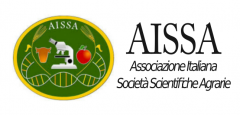
Recognition of Banana Fusarium Wilt Based on UAV Remote Sensing
Remote Sensing
2020Authors: Huichun Ye, Wenjiang Huang, Shanyu Huang, Bei Cui, Yingying Dong, Anting Guo, Yu Ren and Yu Jin
Fusarium wilt (Panama disease) of banana currently threatens banana production areas worldwide. Timely monitoring of Fusarium wilt disease is important for the disease treatment and adjustment of banana planting methods. The objective of this study was to establish a method for identifying the banana regions infested or not infested with Fusarium wilt disease using unmanned aerial vehicle (UAV)-based multispectral imagery. Two experiments were conducted in this study. In experiment 1, 120 sample plots were surveyed, of which 75 % were used as modeling dataset for model fitting and the remaining were used as validation dataset 1 (VD1) for validation. In experiment 2, 35 sample plots were surveyed, which were used as validation dataset 2 (VD2) for model validation. An UAV equipped with a five band multispectral camera was used to capture the multispectral imagery. Eight vegetation indices (VIs) related to pigment absorption and plant growth changes were chosen for determining the biophysical and biochemical characteristics of the plants. The binary logistic regression (BLR) method was used to assess the spatial relationships between the VIs and the plants infested or not infested with Fusarium wilt. The results showed that the banana Fusarium wilt disease can be easily identified using the VIs including the green chlorophyll index (CIgreen), red-edge chlorophyll index (CIRE), normalized difference vegetation index (NDVI), and normalized difference red-edge index (NDRE). The fitting overall accuracies of the models were greater than 80 %. Among the investigated VIs, the CIRE exhibited the best performance both for the VD1 (OA = 91.7 %, Kappa = 0.83) and VD2 (OA =80.0 %, Kappa = 0.59). For the same type of VI, the VIs including a red-edge band obtained a better performance than that excluding a red-edge band. A simulation of imagery with different spatial resolutions (i.e., 0.5-m, 1-m, 2-m, 5-m, and 10-m resolutions) showed that good identification accuracy of Fusarium wilt was obtained when the resolution was higher than 2m. As the resolution decreased, the identification accuracy of Fusarium wilt showed a decreasing trend. The findings indicate that UAV-based remote sensing with a red-edge band is suitable for identifying Fusarium wilt disease. The results of this study provide guidance for detecting the disease and crop planting adjustment.




